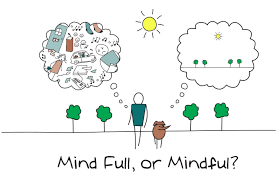How to Handle the Summer Heat
West End Healthline
by Brittany Mccosh, DO
With outdoor activities in full swing and temperatures climbing, it is important to know how to manage those extra hot days and recognize signs of heat illness. Believe it or not, exertional heat illness (EHI) is among the leading causes of death in young athletes each year. Anyone who exerts themselves in heat is potentially at risk, and some are even at risk without exercising.
The first step in preventing heat illness is to understand possible risk factors. People more likely to struggle with the heat include those who have a low baseline physical fitness and have not been physically active in the heat recently. This means the body has not had time to adapt to the hot environment. In addition, you would also be at increased risk if you are male, older or younger in age (70+ years old and young children/infants), do not drink enough water or drink alcohol before activity. In addition, those with heart disease and some medications/supplements can put you at risk for heat-related illness. Review your medications with your provider if you have any concerns.
During an average day without physical exertion or time in the sun, a person should drink two to three liters of fluid per day, preferably water. An average water bottle is one-half of a liter, which would be four to six water bottles per day. How do you know if you are drinking enough water? Check the color of your urine. It should be light yellow or clear. If it is dark yellow, you need more water! It is important to keep in mind that alcohol actually dehydrates people, and therefore is not a good fluid on a hot day. Working toward this basic goal is a good place to start in preventing heat illness.
Once exercising, a person should additionally drink .2-.3 liters of water for every 10-20 minutes of exercise; so about half a bottle of water. To further prevent heat illness, it is recommended that people pre-hydrate themselves with one to two bottles of water, starting two to three hours before planned exertion in the heat.
Some other prevention tips include taking breaks during exercise, acclimating to the heat over time by slowly increasing the amount of time in it, wearing loose and lightweight clothing, and trying to plan exertion at cooler times of the day (usually in the early morning).
There is a spectrum of heat illnesses, ranging from heat cramps all the way to heat stroke. Muscle cramps, or heat cramps, during exercise in the heat, is a likely sign that you need to drink fluid quickly. A person should pause for some rest and rehydration at this point.
Heat exhaustion is next on the spectrum. Signs of heat exhaustion include headache, dizziness, a lot of sweating, nausea, vomiting, diarrhea, stomach cramping, weakness, and persistent muscle cramps. A body temperature is usually 101 to 104 degrees Fahrenheit at that time. It is critical to take action if you are experiencing these symptoms as your body needs to cool down.
Things to do at this time include spraying off with cool water, resting in the shade or an air-conditioned location, taking a cool bath or shower, taking off excess clothing, drinking fluids, and consider putting ice packs around the neck, groin, and armpits.
If a person is exhibiting confusion, odd behavior, or altered mentation, they could be experiencing heat stroke and have a body temperature above 104 degrees. A fast heart rate and low blood pressure are also concerning signs. This is a medical emergency and 911 should be called. While awaiting help, submerging their body in ice water is ideal, but if not available get them out of the heat and apply ice cold towels or ice packs around the neck, groin, and armpits.
Prevention is key in these situations, but the awareness of signs and symptoms to watch for can be extremely beneficial. Let’s help keep our community safe by spreading our knowledge on prevention and signs of heat illness.
Brittany McCosh, DO is a family medicine doctor at Allina Health United Family Physicians, 233 Grand Ave, Saint Paul, MN 55102. 651-241-5200




